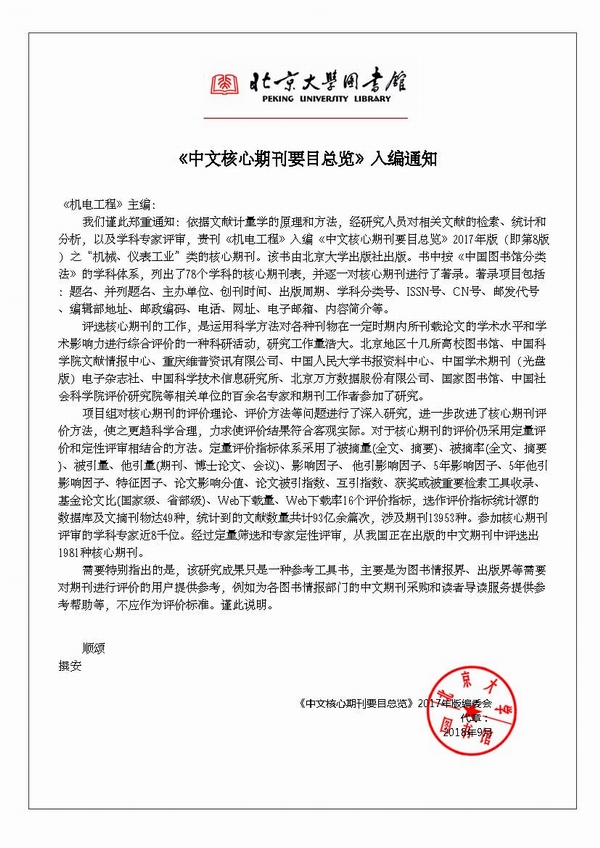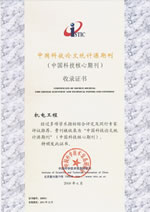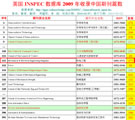
Founded in 1971 >
Chinese Sci-tech Core Periodicals >
British Science Abstracts (SA, INSPEC) Indexed Journals >
United States, Cambridge Scientific Abstract: Technology (CSA: T) Indexed Journals >
United States, Ulrich's Periodicals Directory(UPD)Indexed Journals >
United States, Cambridge Scientific Abstract: Natural Science (CSA: NS) Indexed Journals >
Poland ,Index of Copernicus(IC) Indexed Journals >
International Standard Serial Number:
ISSN 1001-4551
Sponsor:
Zhejiang University;
Zhejiang Machinery and Electrical Group
Edited by:
Editorial of Journal of Mechanical & Electrical Engineering
Chief Editor:
ZHAO Qun
Vice Chief Editor:
TANG ren-zhong,
LUO Xiang-yang
Tel:
86-571-87041360,87239525
Fax:
86-571-87239571
Add:
No.9 Gaoguannong,Daxue Road,Hangzhou,China
P.C:
310009
E-mail:
meem_contribute@163.com
Abstract: Aiming at the problems of complex and changeable operation conditions, inconsistent size of feature areas, difficulty in extracting and distinguishing faults for wind turbine rolling bearings, a rolling bearing fault diagnosis method (MSCNNSA-BiGRU) was proposed based on a multi-scale convolutional neural network (MSCNN), the self-attention (SA) mechanism and bidirectional gated recurrent unit (BiGRU). Firstly, the multi-scale feature information of the original vibration signal was extracted by MSCNN. Then, the history and future information of the original vibration signal was mined by the BiGRU, and the time sequence feature information of the data was extracted more comprehensively. Meanwhile, SA was introduced to focus on the fault feature to improve the fault diagnosis accuracy of the model. Finally, the feature information was fused into the feature vector and input into the SoftMax layer to achieve fault classification. The proposed method was applied to the actual rolling bearing fault diagnosis of wind turbines. The results show that the fault identification accuracy is up to 92.7% under different working conditions, and the average accuracy is 8.13% higher than that of the classical MSCNN network. Based on the method, the multi-scale time series features from original vibration signals was directly adaptively extracted, “endtoend” fault diagnosis was achieved, the process of artificial feature extraction was avoided, and the generalization ability and robustness was improved. It has a certain value for practical engineering research and application of rolling bearing fault diagnosis in wind turbines.
Key words: mechanical operation and maintenance; multiscale convolutional neural network(MSCNN); self-attention (SA) mechanism; bidirectional gated recurrent unit (BiGRU); feature vector; fault classification








